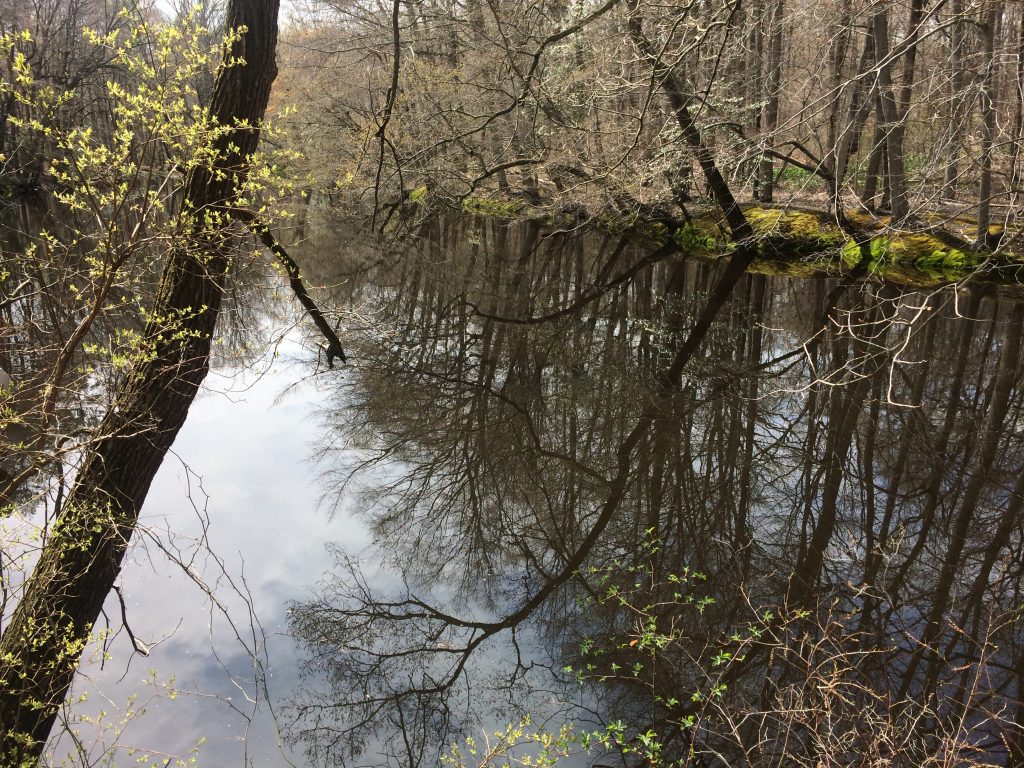Since Camp Dark Waters is on the edge of the Pine Barrens, there are lots of diverse tree species on the land. There are currently, 28 species of trees in Camp Dark Waters, which is about 15 acres of land. Some species on the lands of Camp Dark Waters include Sweet Gum, Sycamore, Black Gum, Tulip Poplar, Red Maple, Hollies, and various types of Oak Trees. Over the decades’ fires have been a big part of the developing Pine trees in the Pine Barrens. Pine trees survive best if a fire occurs every few years. Fires have allowed Pine trees to spread their seeds to regrow and survive through these lands. Natural fires and deliberately set fires have both occurred in Pine forests.
In the 1800s, the burning of the Pinewood benefited the charcoal industry. By setting fires to these trees, was to kill them and make the wood worthless to any other purpose than charcoal. Thus, these trees could be purchased cheaply. Also, young shoots would spring up after a bear fire, large luscious berries. These berries could be gathered and collected for sale. Often deliberate human origin fire occurred because of lands used for agriculture the rules and the proper boundaries of the land. Most of these disputes involved lawyers. Another reason for setting fires was angry landowners, but also fires were set to provide work for jobless individuals. Fires happened so often, that individuals looked at them as inevitable.
Since the Pine Barrens hadn’t had frequent forest fires, some Pine trees are dying off and Oak trees are being planted in replace of the Pine trees. The change from Pines to Oak trees has caused many changes to species including foliage insects, birds, small mammals, and mosses. In Richard T. T. Forman chapter called “The Pine Barrens of New Jersey: An Ecological Mosaic, he mentions the impact of fires for the stability of the Pinelands. Forman states, “Succession in the uplands leads to oak-history forests, but wildfires at perhaps a four-decade interval produce oak-pine forests and more frequent wildfires produce forests of pitch pine and shrub oak” (574). This explains the condition of camp dark waters. Oak trees such as White oak, Spanish oak, and Black oaks have started to grow intertwined within the growth of Pine trees at Camp Dark Waters. Other trees that make up the diversity of Camp Dark Waters is the Sweet Gum trees, where the seeds are in a ball with spikes covering the entire sphere. Sycamores prefer to grow near water on the banks of rivers and creeks. Not related to the sweet gum trees Black Gum trees produce berries that birds like to eat as well as deer. Black gum trees prefer to also grow near water and in late summer early fall their leaves turn a vibrant bright red to their leaves. Another species of tree is the Tulip poplar which grows really fast, really straight and very tall (in the same family as the magnolia tree). These trees usually take over when an older bigger tree comes down and grows in its place. They also like to grow in bright open spaces where sunlight can reach them. Holly trees are evergreen trees and also known as understory trees. These trees tend not to be very tall and can grow and tolerate lots of shade. These trees grow slowly. The last species of tree I’m going to talk about are Ash trees, which are fast-growing trees and resemble maple seeds. Ash have wings on their seeds just like Maple seeds and blown around and taken away by the wind.
